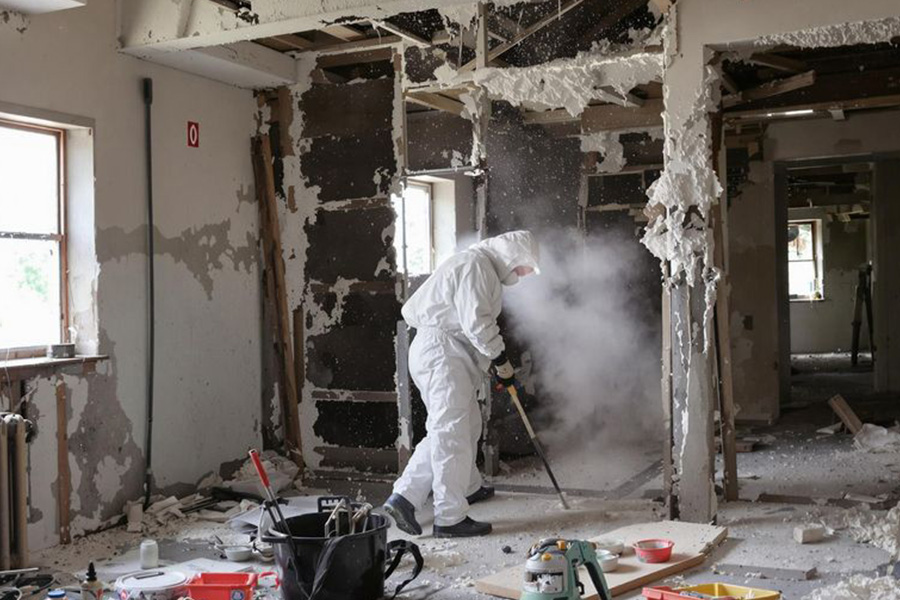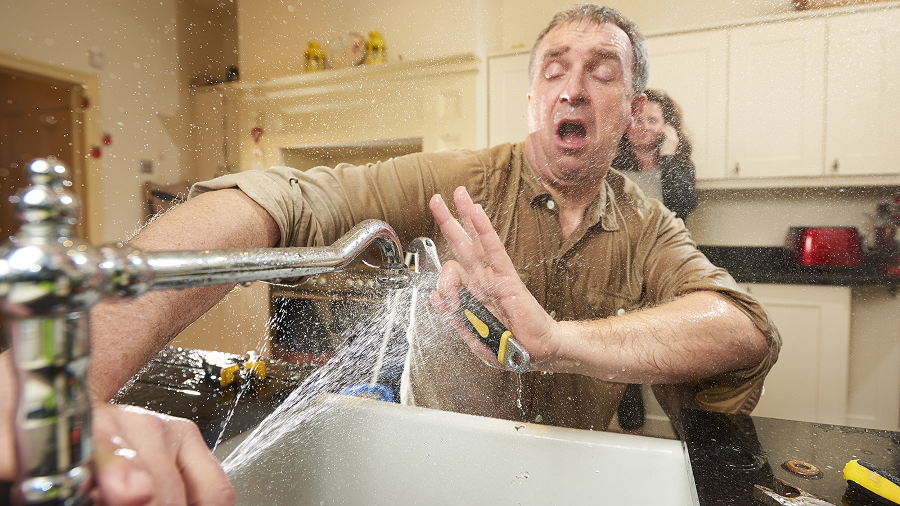Dangers of Asbestos

Health Risks Associated with Asbestos Exposure
Asbestos poses a significant threat to human health, primarily due to its microscopic fibers that can become airborne and inhaled. Once inhaled, these fibers can embed themselves in the lung tissue, causing irritation and long-term damage. Prolonged exposure is directly linked to serious conditions such as mesothelioma, a rare and aggressive form of cancer, as well as lung cancer, asbestosis, and pleural plaques. According to studies, long-term exposure to asbestos is the leading cause of mesothelioma and is also associated with other forms of cancer, including ovarian and laryngeal cancers. Even brief exposure can have lasting health implications, making awareness and prevention critical.
Common Sources of Asbestos in Homes
Many older homes, particularly those built before the 1980s, contain asbestos in various materials. Common sources include:
- Insulation materials, such as pipe and duct insulation.
- Floor tiles and adhesives.
- Roofing shingles and siding.
- Popcorn ceilings and textured paints.
If these materials remain undisturbed, the risk of exposure may be minimal. However, any renovation, damage, or wear can release harmful fibers into the air. DIY projects, for example, often unknowingly disturb asbestos-containing materials, increasing the likelihood of exposure.
Why Asbestos Removal is Crucial
Removing asbestos is essential to protect both current and future occupants of a building. When asbestos-containing materials deteriorate, they release fibers that can be inhaled by anyone nearby. Over time, these fibers accumulate in the lungs, leading to irreversible health conditions. Asbestos exposure not only causes lung and abdominal damage but also results in scarring and irritation that worsens over time. This is why professional abatement services are highly recommended—they ensure the safe removal and disposal of hazardous materials. Addressing asbestos promptly can prevent unnecessary risks and create a safer living environment for everyone.
Identifying Asbestos in Your Home
Signs of Asbestos-Containing Materials
Older homes, especially those built before the 1980s, often contain materials with asbestos. Keep an eye out for things like crumbling insulation, brittle ceiling tiles, or aging vinyl floor tiles. Asbestos-containing materials can also be found in roof shingles or around pipes and ducts. If you notice any signs of wear or damage, it’s critical to act cautiously. Avoid disturbing the material, as this can release harmful fibers into the air.
Hiring a Certified Asbestos Inspector
To confirm the presence of asbestos, it’s best to hire a certified inspector. These professionals have the tools and expertise to assess your home safely. When choosing an inspector, ask for their credentials and experience with asbestos testing. A proper inspection can provide peace of mind and ensure that any necessary removal is handled correctly.
Laboratory Testing for Asbestos
Sometimes, visual inspection alone isn’t enough. Samples of suspicious materials may need to be sent to a lab for analysis. The lab will determine if asbestos is present and at what concentration. This step is vital for creating a safe removal plan. Remember, companies like Serenity at Summit emphasize the importance of precise testing to protect your health and home.
Preparing for Asbestos Removal
Sealing Off the Work Area
Before any asbestos removal begins, it’s critical to isolate the work zone to prevent contamination. Plastic sheeting and duct tape are commonly used to seal off openings like doors, windows, and vents. This creates a contained area where asbestos fibers can’t escape into other parts of the building. Additionally, immovable items within the space should be covered with plastic sheeting to protect them from contamination. Posting clear warning signs around the area, such as “Danger: Asbestos – Authorized Personnel Only,” is a necessary step to ensure safety.
Disabling HVAC and Electrical Systems
To prevent asbestos fibers from circulating through the air, all HVAC systems in the affected area must be turned off. This includes air conditioning, heating, and ventilation systems. Electrical systems should also be disabled to minimize fire hazards during removal. In some cases, a temporary electrical setup may be installed to power essential equipment like HEPA-filtered negative air pressure units, which help maintain clean airflow outside the work zone.
Setting Up Decontamination Units
Decontamination units are essential for maintaining safety during asbestos removal. These units typically consist of three chambers: a clean room, a shower room, and a dirty room. Workers must pass through these areas to remove contaminated clothing and equipment before leaving the work zone. This helps prevent asbestos fibers from being carried into other areas. Facilities like Evoke Wellness emphasize the importance of thorough preparation to minimize risks and ensure a safe removal process.
Essential Safety Measures During Asbestos Removal
Personal Protective Equipment Requirements
When dealing with asbestos, the safety of workers and anyone nearby is the highest priority. Proper personal protective equipment (PPE) is mandatory. This includes respirators designed to filter asbestos fibers, disposable coveralls, gloves, and protective footwear. Eye protection and hard hats may also be necessary, depending on the work environment. Without PPE, the risk of inhaling or coming into contact with asbestos fibers increases significantly, which can lead to severe health issues.
Using HEPA Filters and Negative Air Pressure
To prevent asbestos fibers from contaminating the air, specialized equipment like HEPA filters and negative air pressure machines are essential. Negative air pressure systems ensure that air flows into the work area but not out, effectively containing the fibers. HEPA filters trap even the tiniest particles, ensuring that the air exiting the work area is clean. These tools are critical for maintaining a safe environment during removal.
Posting Warning Signs and Labels
Clear and visible warning signs must be posted around the work area. These signs should state: “Danger: Asbestos, Cancer and Lung Disease Hazard. Authorized Personnel Only.” Labels should also be affixed to any containers holding asbestos waste, ensuring that everyone handling or near the materials is aware of the hazard. This step is not just a formality; it’s a legal requirement and a key part of maintaining safety throughout the process.
Step-by-Step Guide to Asbestos Removal
Wet Removal Techniques
When dealing with asbestos, keeping the material wet is one of the safest methods to limit fiber release. Using a mist of water mixed with a wetting agent allows fibers to stay contained, reducing the chances of airborne contamination. Workers should apply the solution generously to all affected areas during the removal process. This step is non-negotiable to ensure safety for everyone involved.
Proper Handling of Asbestos Waste
Handling asbestos waste requires extreme caution. All removed materials must be double-bagged in heavy-duty, airtight plastic bags. Each bag should be sealed tightly and labeled as hazardous waste. This labeling is not just a precaution—it’s a legal requirement. Workers must also use specialized tools to assist in safely removing and securing the waste.
Cleaning the Area with HEPA Vacuums
After the asbestos material is removed, the area must be cleaned thoroughly using HEPA vacuums. These vacuums are designed to capture even the smallest asbestos fibers, ensuring the workspace is free from contamination. As a final step, all surfaces should be wiped down with damp cloths to remove any lingering particles. For spaces like a rehab facility, this step is especially critical to maintain a safe environment for occupants.
Disposing of Asbestos Safely
Packaging and Labeling Asbestos Waste
Properly packaging asbestos waste is a critical step to prevent fibers from escaping into the air. Waste materials should be sealed in leak-tight containers while still wet to minimize the risk of airborne particles. Clear labeling is required, with warnings indicating the hazardous nature of the contents. Labels should include terms like “Danger” and “Contains Asbestos Fibers.” This ensures anyone handling the waste understands the risks involved.
Transporting Asbestos to Licensed Facilities
Transporting asbestos waste demands strict precautions. Vehicles used for this purpose must comply with specific requirements to ensure the safety of the public and the environment. The waste must remain sealed during transit, and the vehicle must display visible warnings about the hazardous cargo. Only licensed facilities equipped to handle asbestos disposal should receive these materials. This measure prevents contamination and ensures proper handling.
Regulations for Asbestos Disposal
Asbestos is classified as hazardous waste, meaning its disposal is subject to stringent regulations. Disposal sites must be licensed and adhere to legal requirements for handling, storage, and burial of asbestos materials. These regulations aim to protect public health and the environment from exposure. Individuals or companies disposing of asbestos must comply with local, state, and federal laws to avoid penalties and ensure safety. For detailed guidance on safe practices, refer to this resource.
Hiring Professional Asbestos Abatement Services
Benefits of Hiring Certified Contractors
Removing asbestos is no small task. It’s hazardous and requires expertise. Certified contractors bring the necessary experience and tools to handle the job safely. They follow strict safety protocols to minimize exposure risks, ensuring the health of everyone involved.
- They have specialized training in asbestos removal.
- They use advanced equipment, like HEPA vacuums, to contain fibers.
- They comply with local and federal regulations, avoiding legal trouble.
Questions to Ask Before Hiring
Before choosing a contractor, it’s smart to ask some key questions. This ensures you’re working with a reliable and qualified team.
- Are you licensed and insured for asbestos removal?
- What is your process for handling asbestos waste?
- Can you provide references or customer reviews?
These questions help you gauge their expertise and professionalism. For example, discovering top local asbestos removal professionals can provide peace of mind and ensure the job is done right.
Verifying Licenses and Insurance
Always confirm the contractor’s credentials. A licensed contractor meets legal requirements and has the training to perform safe removals. Insurance is equally important—it protects you in case of accidents or damages during the project.
Take the time to verify these details. It’s similar to choosing a trusted addiction rehab facility; you wouldn’t leave something so critical to chance.
Types of Asbestos Abatement Work
Class I Asbestos Work
Class I asbestos work involves the removal of materials designed to prevent heat loss or gain, such as insulation and surfacing materials that may contain asbestos. This type of work is the most hazardous and requires strict safety protocols to ensure the fibers do not become airborne. Workers performing this task are often required to use advanced protective measures, including sealed containment areas and specialized equipment.
Class II Asbestos Work
Class II asbestos work focuses on nonthermal materials, like wallboards, floor tiles, roofing shingles, and construction mastics. These materials are commonly found in older buildings and homes. Although less hazardous than Class I, this type still requires careful handling and disposal to minimize exposure risks and ensure compliance with regulations.
Class III Asbestos Work
Class III asbestos work is typically associated with repair and maintenance tasks where asbestos-containing materials might be disturbed. This type of work is often performed by maintenance staff or contractors during routine building upkeep. While less intensive than removal, it still involves safety measures such as wet methods and the use of HEPA vacuums to control dust.
Common Equipment Used in Asbestos Removal
HEPA Vacuums and Filters
When dealing with asbestos, HEPA vacuums are indispensable. These specialized vacuums are designed to trap even the tiniest asbestos fibers, preventing them from becoming airborne. The filters, which stand for High-Efficiency Particulate Air, capture 99.97% of particles as small as 0.3 microns. This ensures that the work area remains as safe as possible during and after removal.
Protective Clothing and Respirators
Workers involved in asbestos removal must wear full protective gear to minimize exposure. This includes disposable coveralls, gloves, and rubber boots that can be thoroughly cleaned or discarded after use. Respirators equipped with HEPA filters are also mandatory to protect against inhaling harmful fibers. Eye protection, such as safety goggles, is another critical component of this gear.
Specialized Tools for Abatement
Removing asbestos often requires a variety of tools designed for precision and safety. Items like glovebags, tile popper blades, and power tools with dust suppression features are commonly used. For example, ABCO Supply provides an array of asbestos removal supplies, including these specialized tools, making the process more manageable and secure.
Legal and Regulatory Considerations
Understanding Local Asbestos Laws
When dealing with asbestos, it’s critical to understand the local laws governing its removal and disposal. Regulations vary by state and municipality, ensuring the safety of workers and residents. These rules often mandate specific treatment methods for asbestos-containing materials (ACMs) and outline the qualifications required for contractors involved in the process.
Permits Required for Asbestos Removal
Before starting any asbestos removal project, obtaining the necessary permits is non-negotiable. These permits ensure that the project complies with environmental and public health standards. Failing to secure the proper documentation can result in hefty fines and project delays. Always verify the requirements with your local authorities.
Employer and Public Liability Insurance
Employers engaged in asbestos rehab must carry adequate liability insurance to cover potential health risks or accidents. This insurance protects both workers and the public from the financial fallout of exposure incidents. Additionally, contractors are often required to provide proof of insurance before commencing any abatement work, ensuring accountability and adherence to legal standards.
Post-Removal Procedures and Inspections
Final Cleaning and Air Quality Testing
After asbestos removal, a thorough cleaning of the work area is essential. All surfaces should be wiped down or vacuumed using a HEPA-filtered vacuum to catch any remaining asbestos fibers. Air quality testing is then conducted to ensure the area is safe for reoccupation. This involves taking air samples and analyzing them for asbestos particles. If the air quality does not meet safety standards, additional cleaning and testing are required.
Obtaining Clearance Certificates
Once the air quality is confirmed as safe, a certified inspector will issue a clearance certificate. This document verifies that the asbestos removal was completed properly and that the area is now free of hazardous materials. Homeowners or building managers should keep this certificate for future reference, as it may be required for compliance with asbestos-related regulations.
Monitoring for Residual Asbestos
Even after clearance, periodic monitoring is recommended, especially in older buildings. This can help detect any residual asbestos fibers that might have been missed during the initial removal. Regular inspections and air tests can provide peace of mind and ensure ongoing safety for occupants.
More Websites
Robert King Mesothelioma Law Services
Leave a Reply
You must be logged in to post a comment.












Leave a Reply